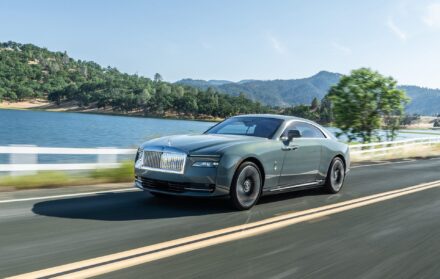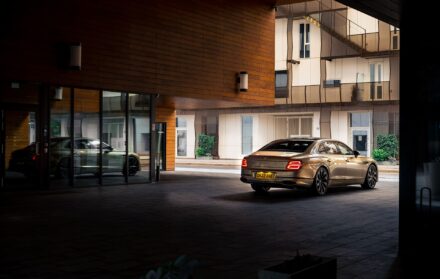
New cat on the block: Road testingthe brand new 2020 Jaguar F-Type
While the visual changes to the new Jaguar F-Type are striking, the two-seater sports car’s revised styling builds on a legendary lineage but also an age-old social status that harks back to the humble horse and
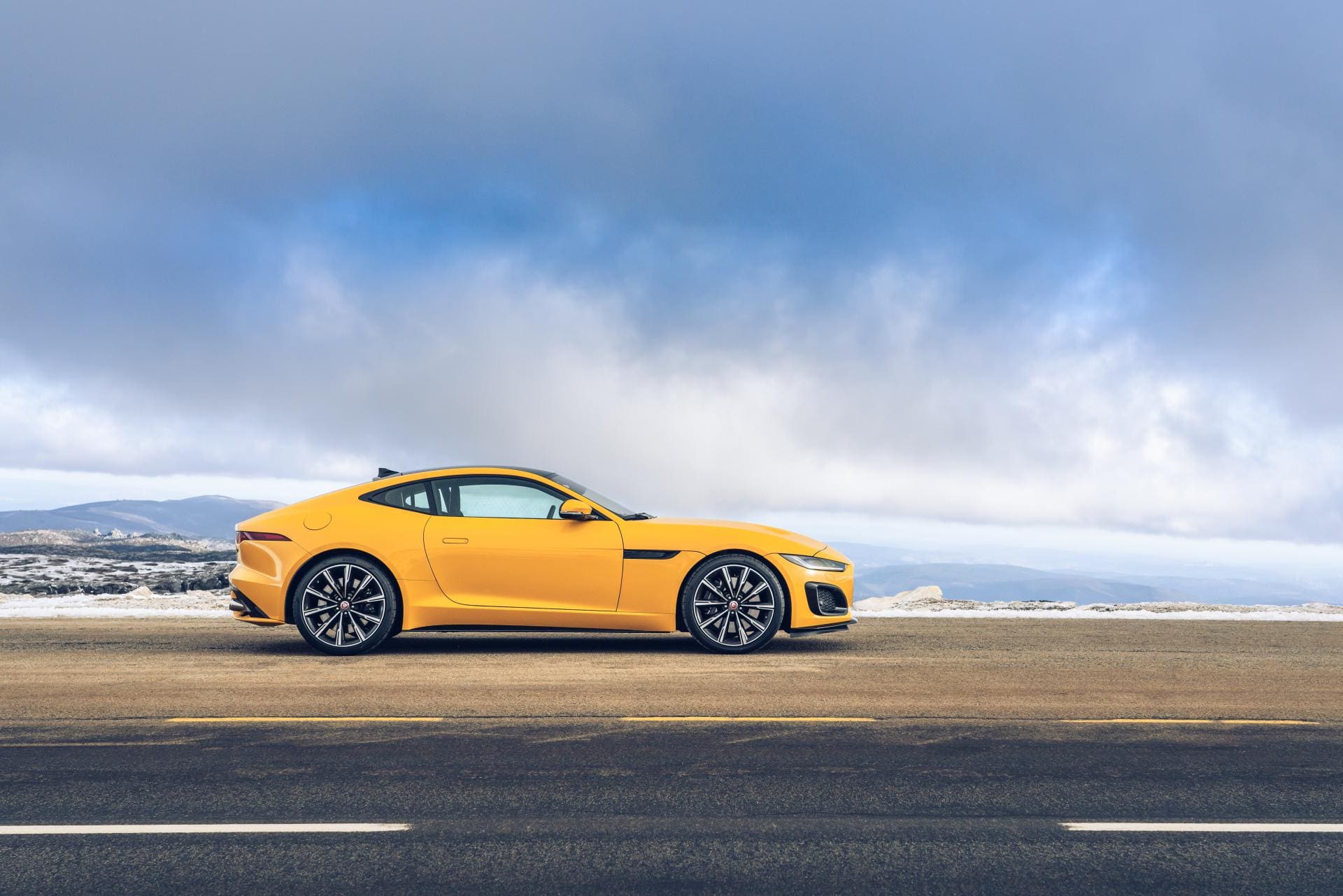
Back in the day, when London’s smog-filled city streets chimed to the sound of horses’ hooves and top hats were two a penny, the fastest way to get around town was via horse and carriage. Trusted as a reliable means of transport, our four-legged friends had been at the forefront of transport technology for millennia and, when coupled to the latest carriage, also served to showcase both status and wealth. While today’s technology has moved on considerably, it seems the social status sentiment remains the same. Well, that’s the case so long as Jaguar’s new, fresh-faced F-Type is anything to go by.
“The idea behind long bonnets and the traditional front-engined sportscar profile originates from the horse and cart”, says Jaguar Design Director Julian Thomson, standing next to the recently revealed F-Type in the minimalist surroundings of London’s Design Museum. “Back then, the wealthier you were, the more horses you had at the front of your carriage to pull you along at a greater speed, faster than anyone else. You sat at the back of the carriage and the horses pulled you along at the front.”
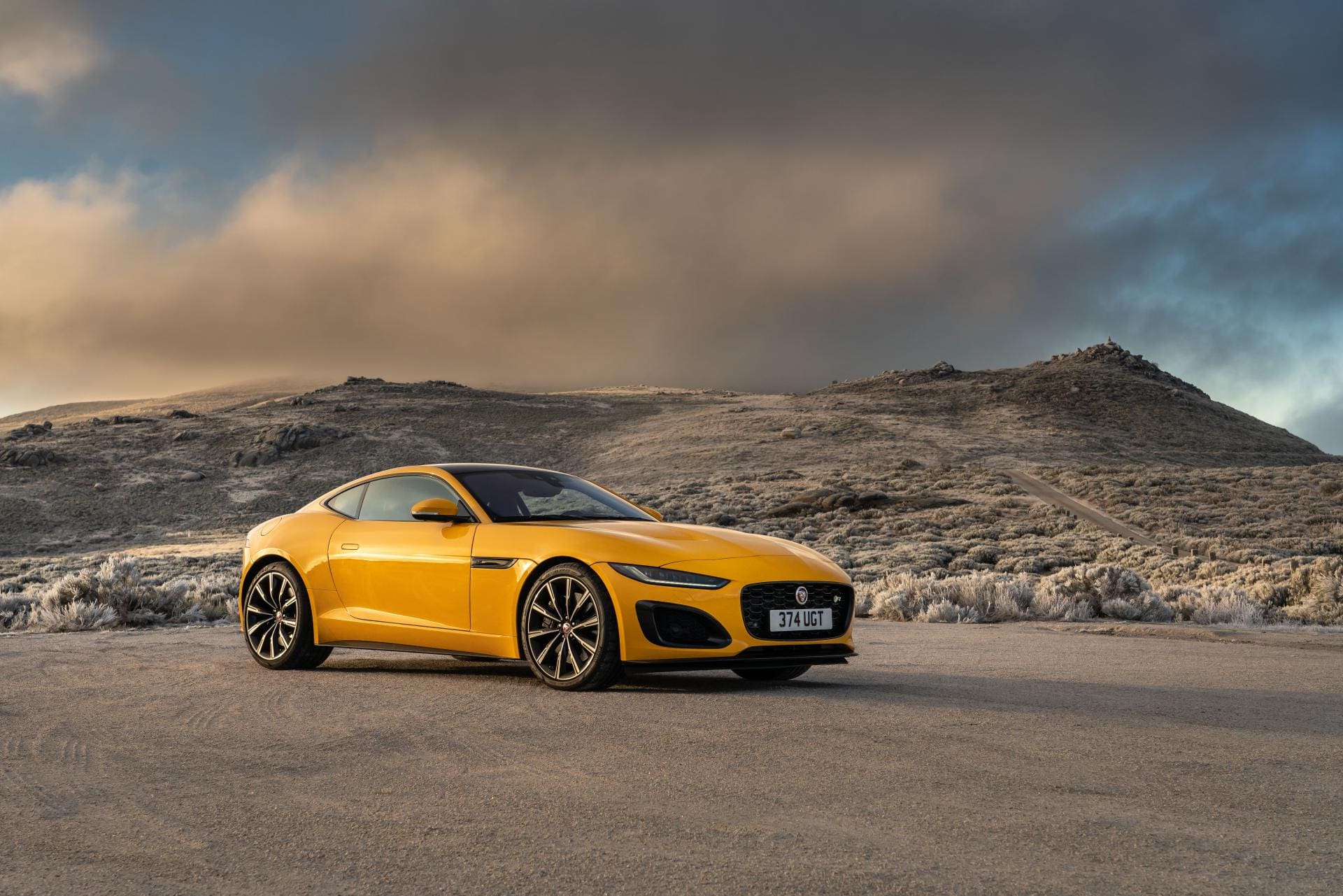
True to his design roots, Thomson turns to the drawing board to further illustrate his theory, sketching it out as he miraculously links the lines of the clumsy-looking horse and cart to the reprofiled F-Type. “When we have a car like the new F-Type, we have a long fender line, which is like the reigns to the horse. When we relate that to a car, you have a large engine upfront with the fender line linking it to the cab at the rear – it’s subconsciously proportioned in the same way as a horse and carriage.” Aside from a learned lesson in proportion, the design demonstration explains how the new shape of the new F-Type builds on Jaguar’s legendary lineage. Everything from the design of the iconic E-Type to the early XJ120 can be traced back to the proportions of the humble horse and cart.
But design is where the similarities stop. Thankfully the new F-Type is quite a bit quicker off the mark than a stallion considerably more enjoyable to pilot across the mountain passes between Porto and Lisbon. Stepping off the plane in Porto just weeks after the Design Museum reveal, we’re greeted by the flagship V8 R Coupe, glowing against its greyscale backdrop in Sorrento Yellow.
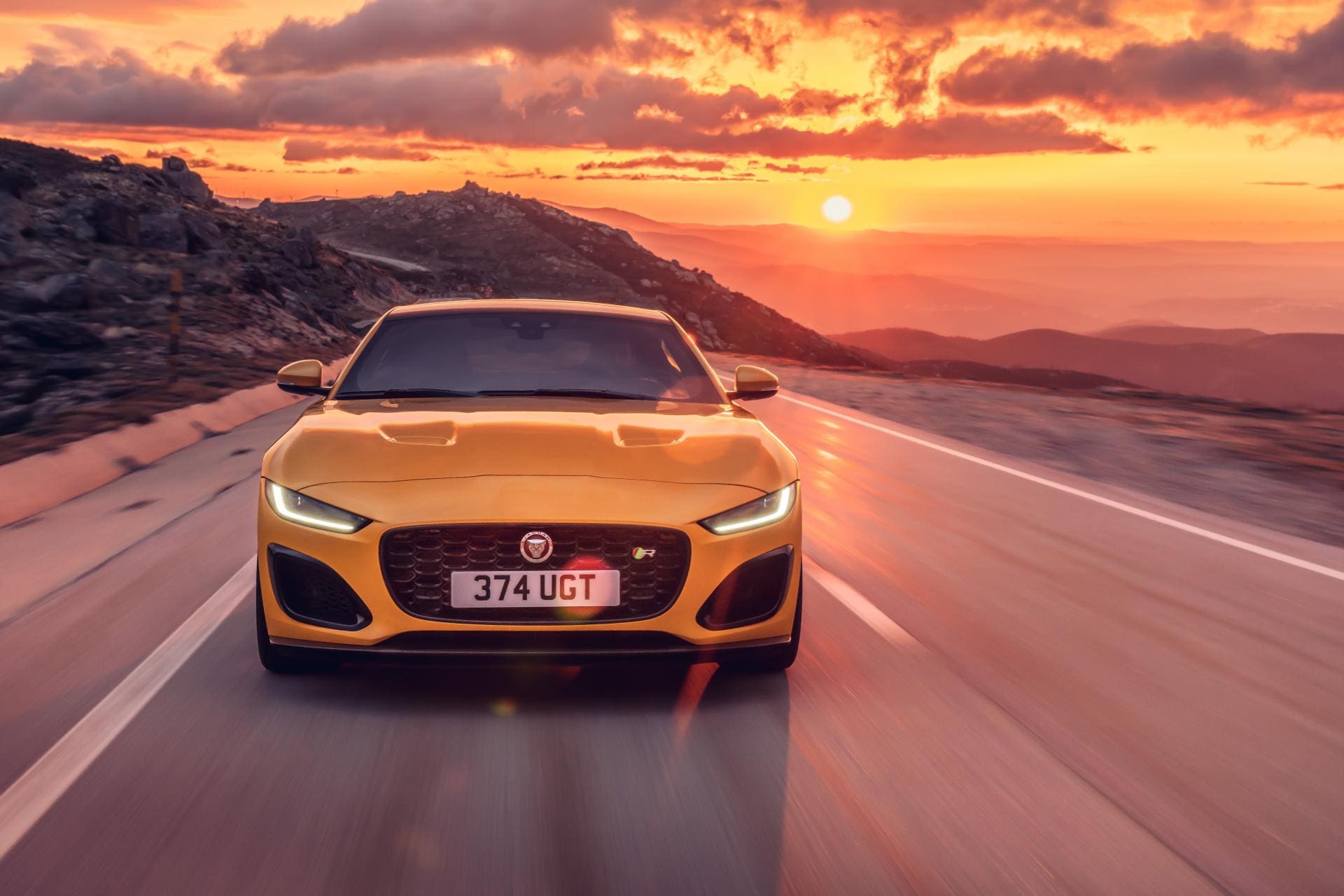
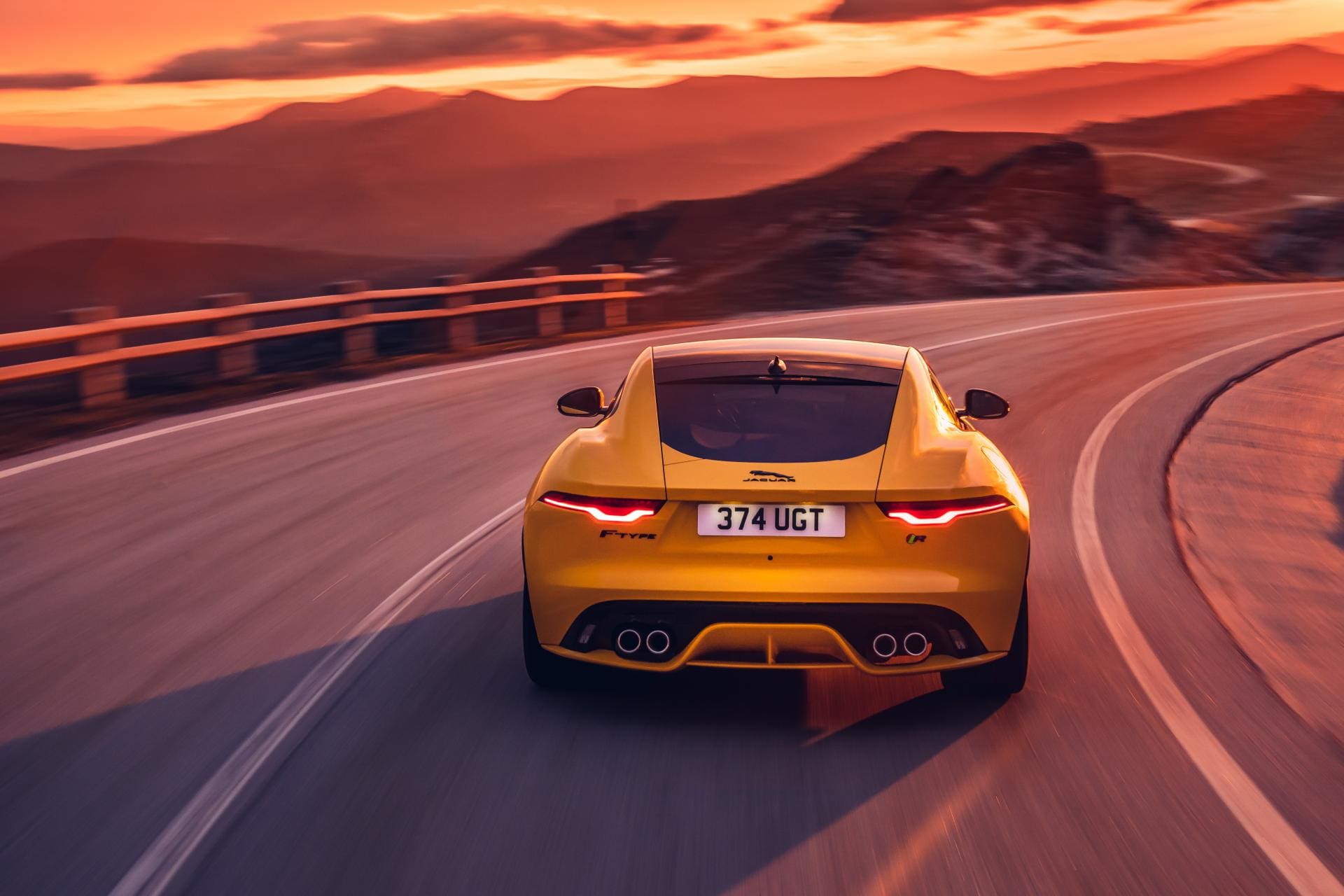
The most striking difference between the new F-Type and its predecessor is the redesigned front end, which is made up of a larger grille and new narrow, LED headlights. While the complete package serves to further elongate the nose – in line with Thomson’s horse and cart design theory – it’s a stark departure from the retro charm of the previous model that harked back to the handsome face of the E-Type. At the rear, Thomson’s design team has made minor adjustments to what was already the car’s most striking aspect. Similar to the face changes, new and narrower rear lights still combine the classic ‘chicane’ LED signature while a more elaborate rear bumper houses all four exhaust pipes as well as a new air diffuser.
Aside from the new front end, the other cosmetic changes are subtle but the latest F-Type adopts a more aggressive and wider stance overall, hinting at the increased power lurking within. Harbouring a 5.0-litre supercharged V8 under its long bonnet, the F-Type will scrub off the 0-60mph dash in just 3.7-seconds – half a second faster than before. In keeping with Thomson’s equine theme, the new F-Type R’s V8 produces 575 horsepower – 25 more than the old model – which is enough to hit a punchy top speed of 186mph.
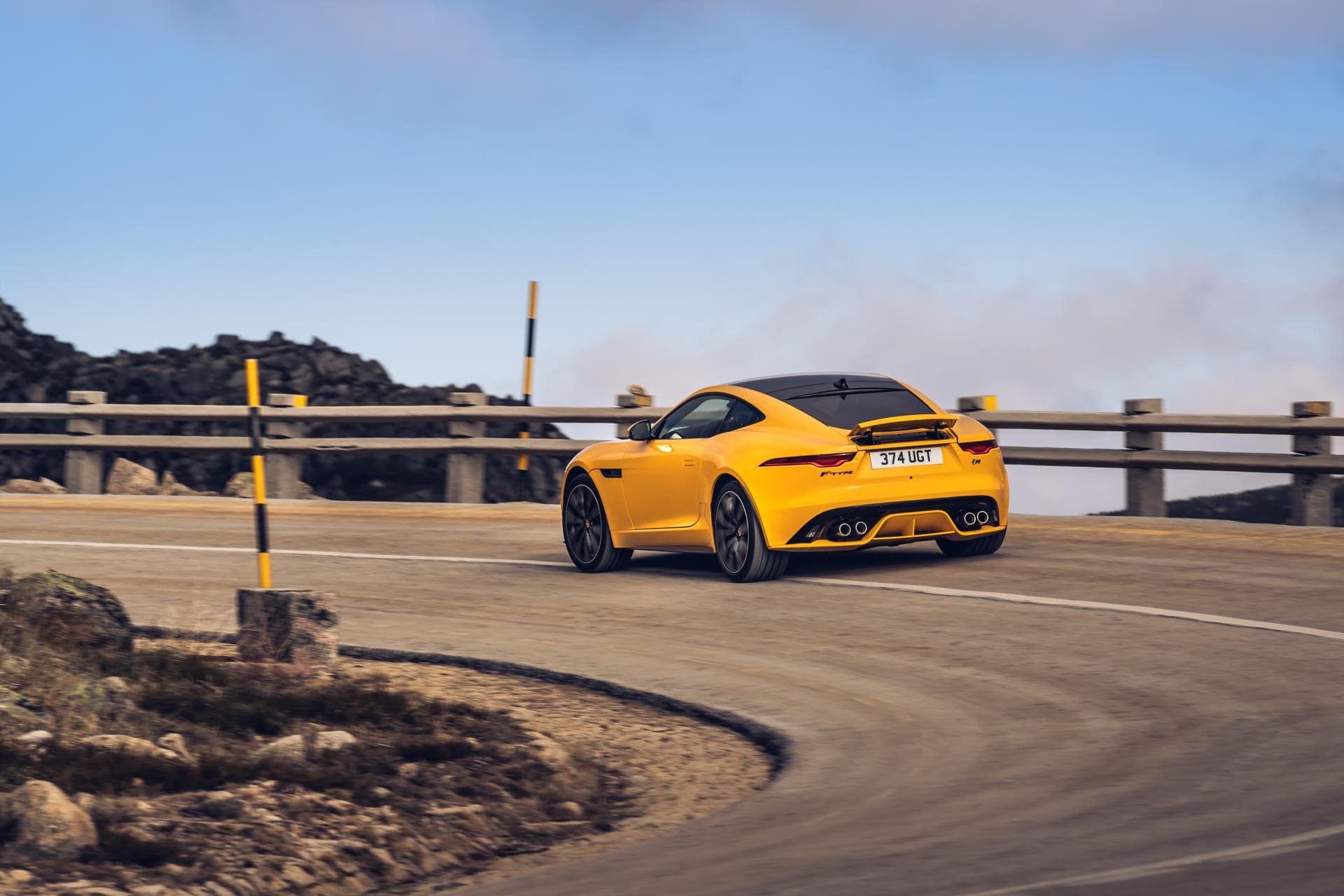

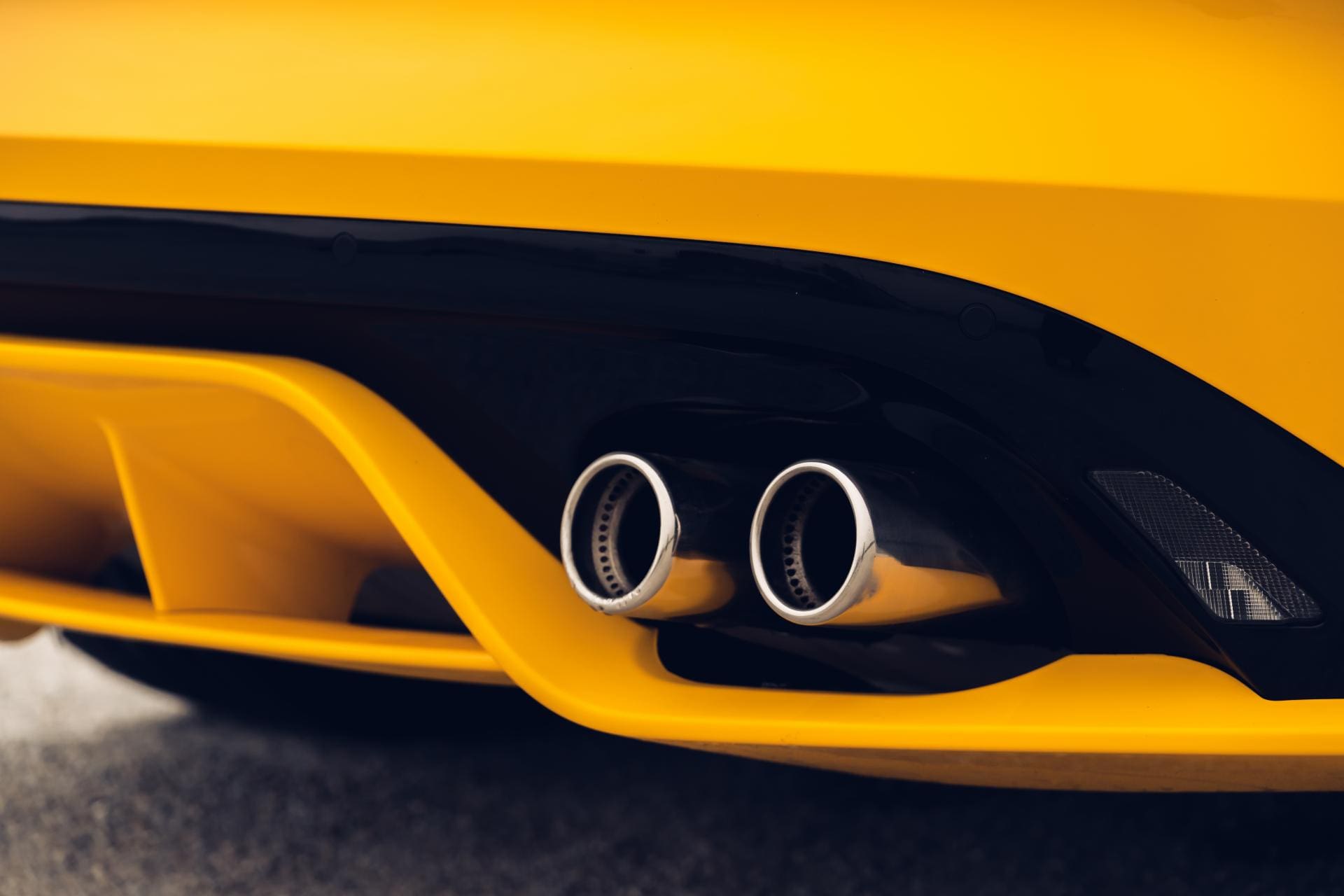
With four-wheel drive as standard, the R makes short work of the switchback N222 road, which cuts through the heart of the Douro Valley leading away from the city of Porto. The valley’s unique microclimate makes it one of the main Port producing regions in the world, evidenced by the acres of vines lining my route through the UNESCO World Heritage Site. Midway through our journey to the capital, we skirt the Serra da Estrela – Portugal’s oldest and largest protected area – before joining the snaking N238, believed to be one of Portugal’s most challenging driving roads owing to its winding, cliff-top elevation. On damp roads, it’s clear to see the F-Type retains some of its playfulness, especially in the rear-wheel drive P450 R-Dynamic model which shares the R’s V8 powerplant, albeit a less-powerful version which produces 450 horsepower.
Heading further on, we pass through the municipality of Vila de Rei, a region located precisely in the centre of Portugal. Notable for its abundance of pine forests, the scars of the devastating wildfires in summer 2018 make for a chilling backdrop as we power on through to Lisbon. Fans of the F-Type’s signature soundtrack will be delighted to learn there’s been very few changes to familiar crackles and pops aside from a new quiet start mode, which will please the next-door neighbours, especially on those early morning starts.
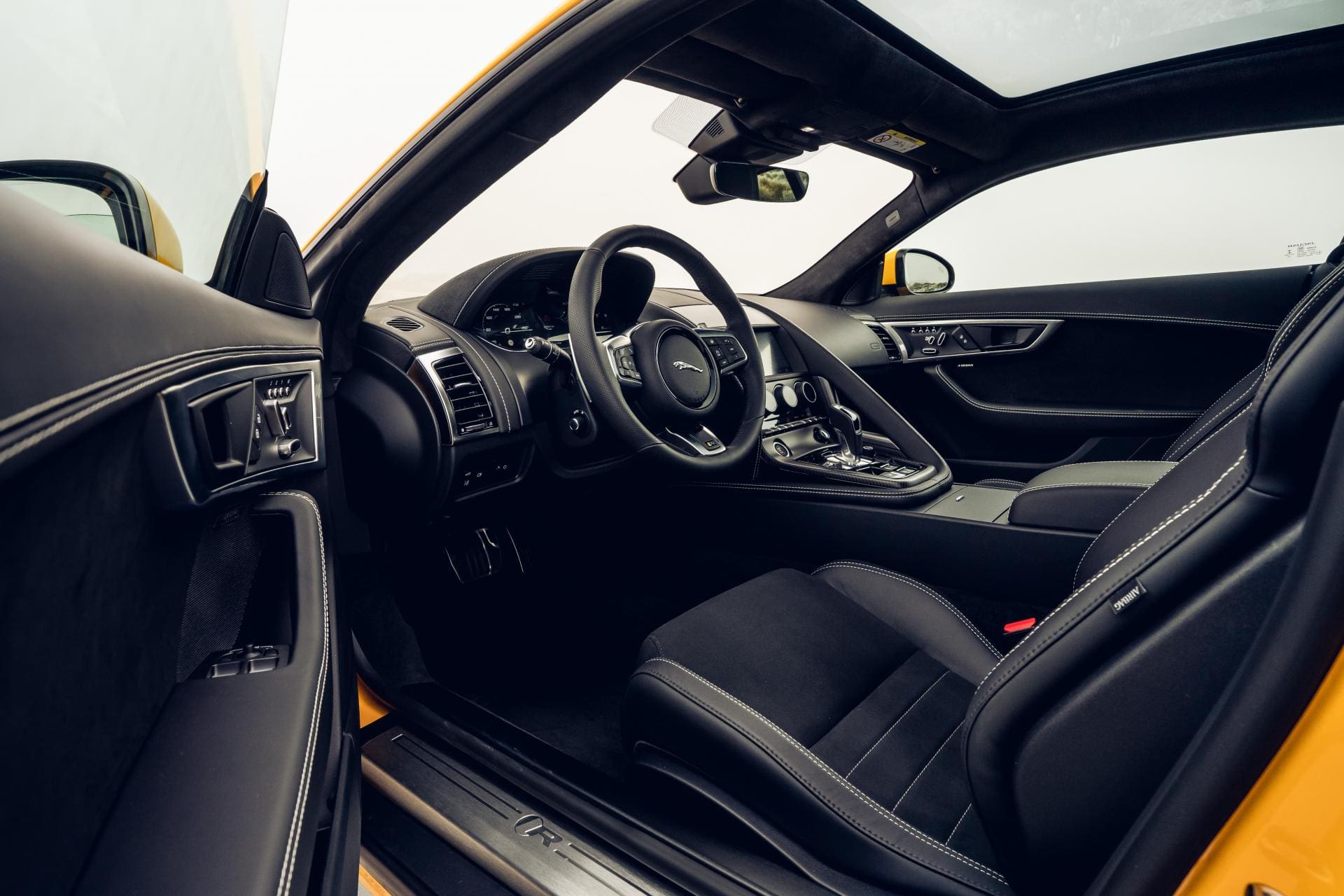
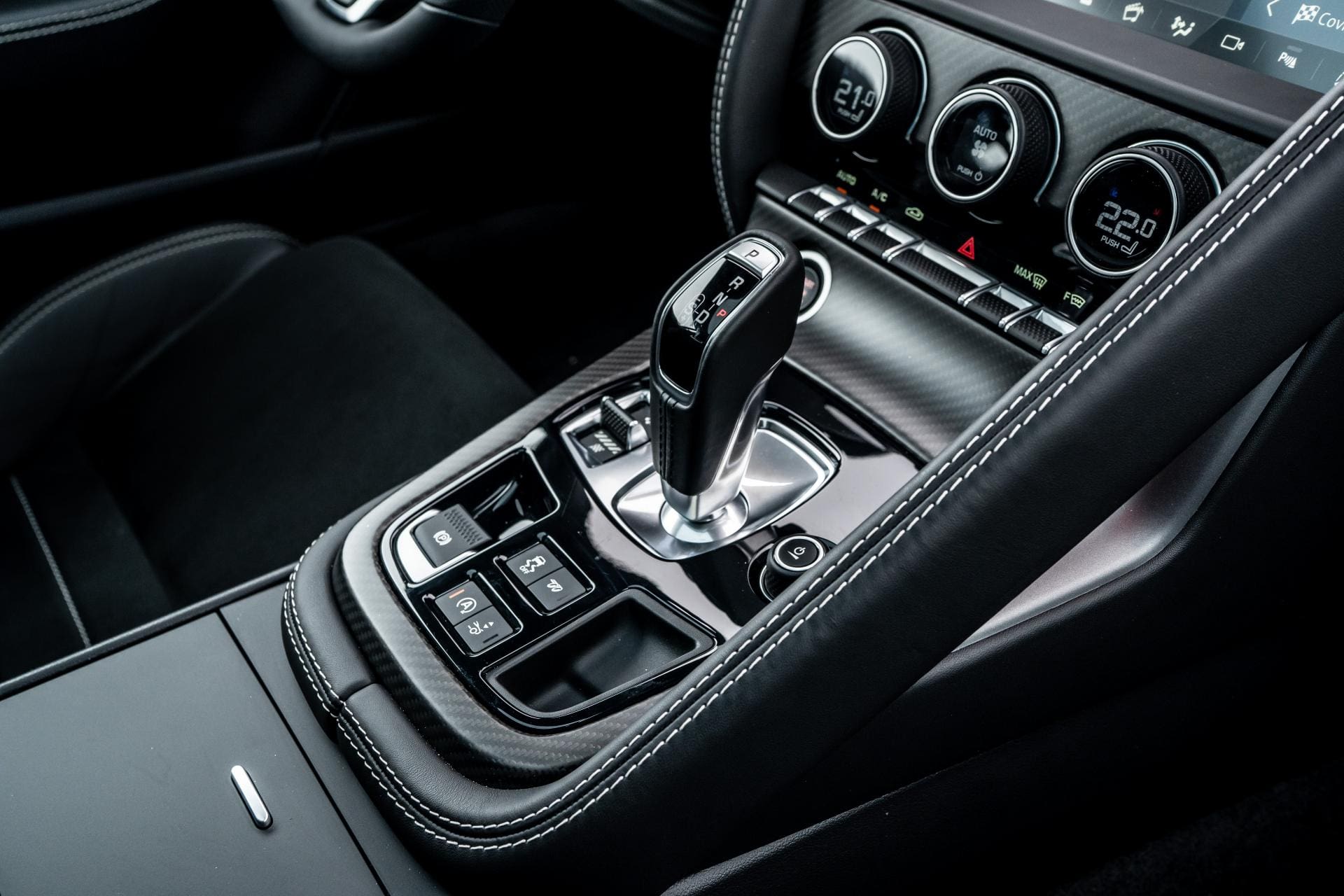
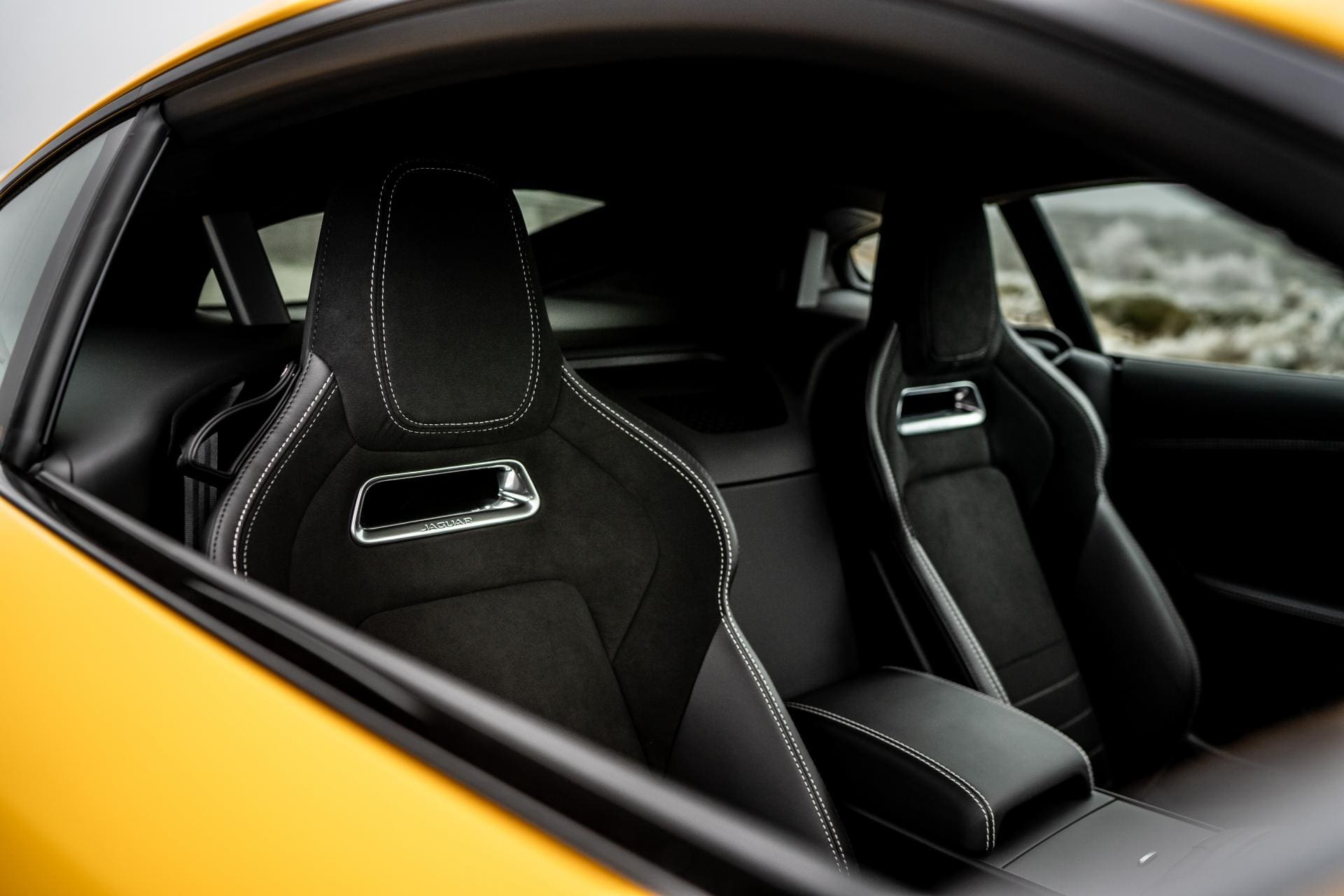
Spending time in the F-Type’s cockpit is as pleasurable as before, while a digital display in place of the traditional instrument binnacle and an improved infotainment system bring it up to speed with the competition. Aside from the improved tech, some minor embellishments to the trim complete the minimal interior makeover but the F-Type still makes for a thoroughly comfortable and refined sports tourer.
Pulling onto the more populated roads leading into Lisbon, our 500mile road trip taking in the best of Portugal is coming to a close. Mastering both the technical mountain passes and miles of mundane motorway, the £97,280 F-Type R is still a very capable and comfortable challenger while the all-over refresh brings it in line with even the latest competitors. With the rise and popularity of the sports SUV, it would appear the days of the plucky two-seater sports car are numbered but Jaguar’s design boss begs to differ. “The romance and escapism that a sports car offers – the dream of it – is still there,” says Thomson. “No matter how people’s attitude changes, they still want that element – the beauty and raw power of a sports car,” he adds, glancing over at the marque’s new flagship. Reflecting on his words as we pull up next to Lisbon’s Ponte 25 de Abril suspension bridge, we bid farewell to our road trip steed. While the world is a vastly different place since the days when the horse and cart reigned supreme, it seems society’s love for the long, sleek sports profile – developed centuries before the invention of the car – still burns bright.
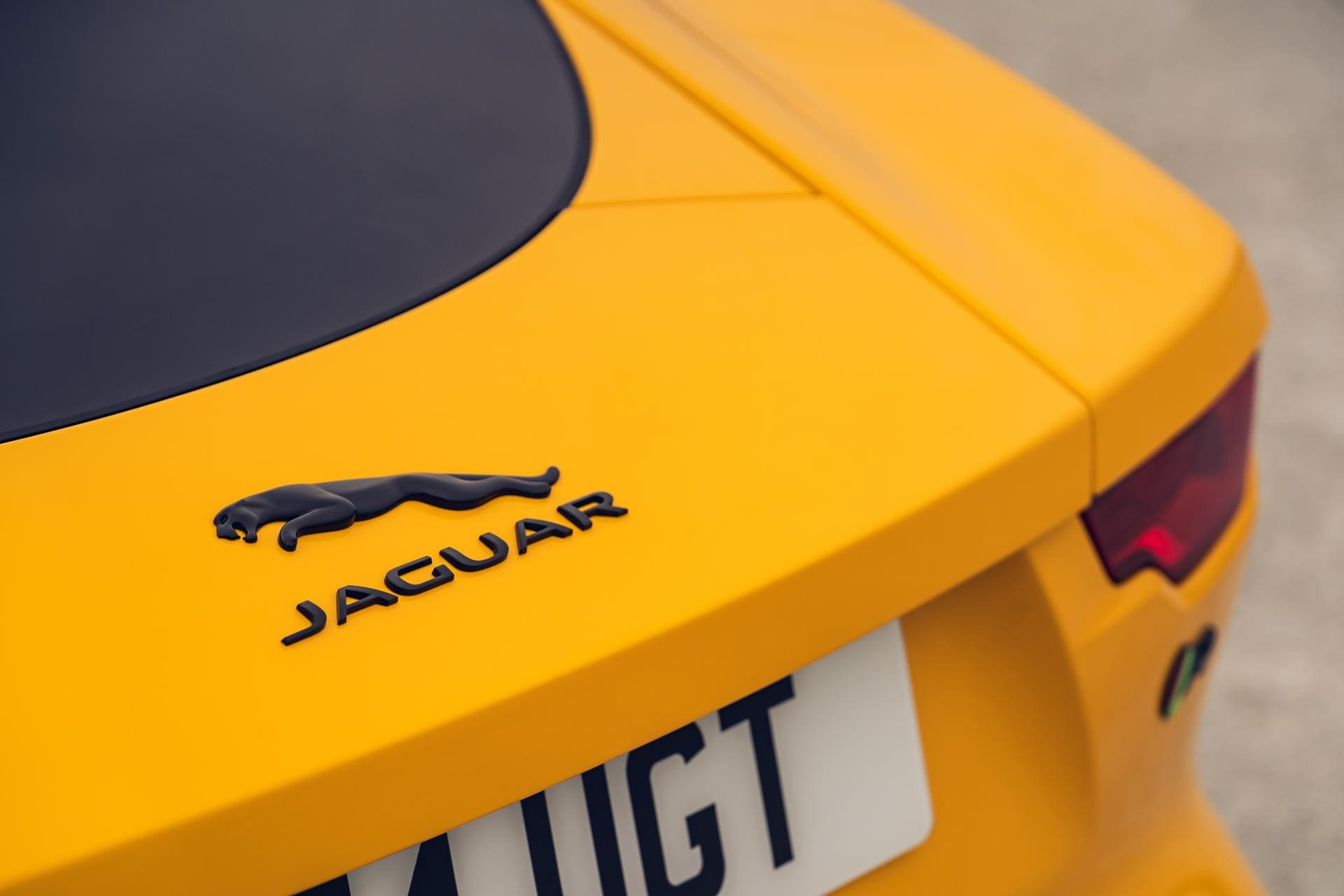
Jaguar F‑Type Coupe P575: Price £97,280 On sale now Engine V8, 5000cc, supercharged, petrol Power 567bhp at 6500rpm Torque 516lb ft at 3500-5000rpm Gearbox 8-spd automatic Kerb weight 1743kg Top speed 186mph 0-62mph 3.7sec Fuel economy 26.4mpg CO2 no WLTP data available






